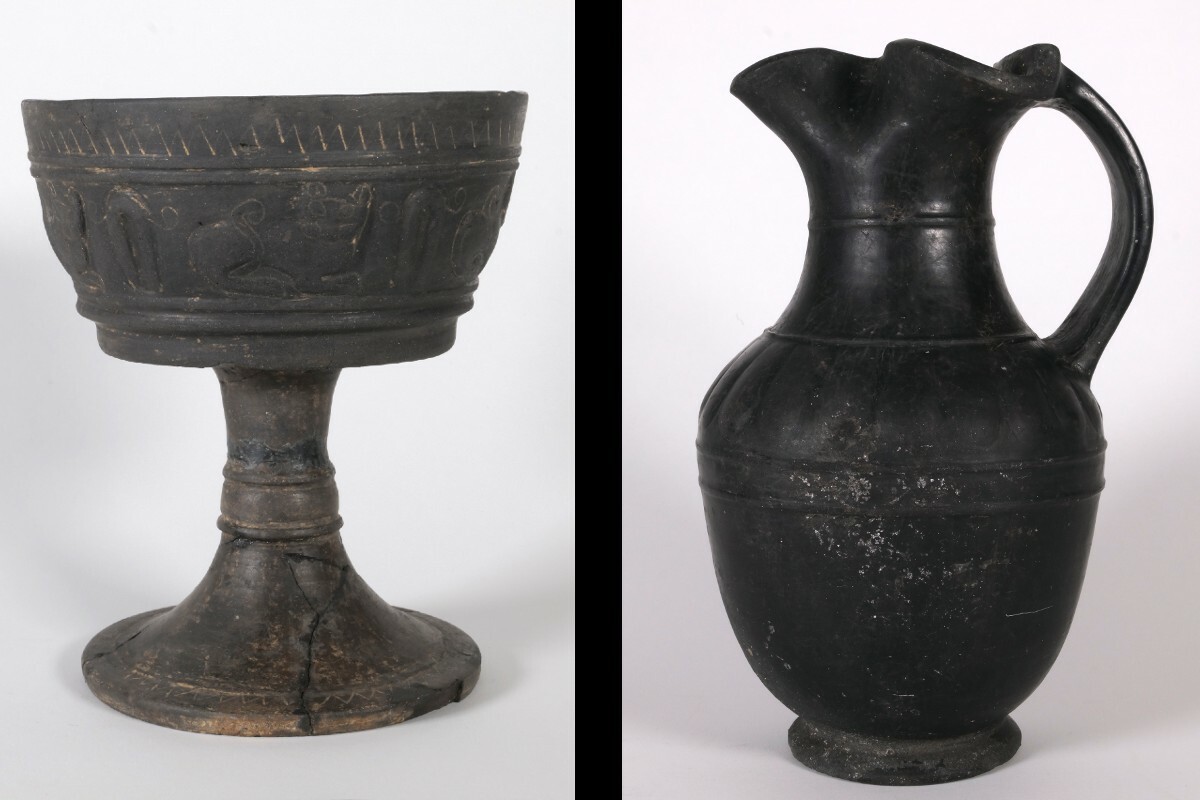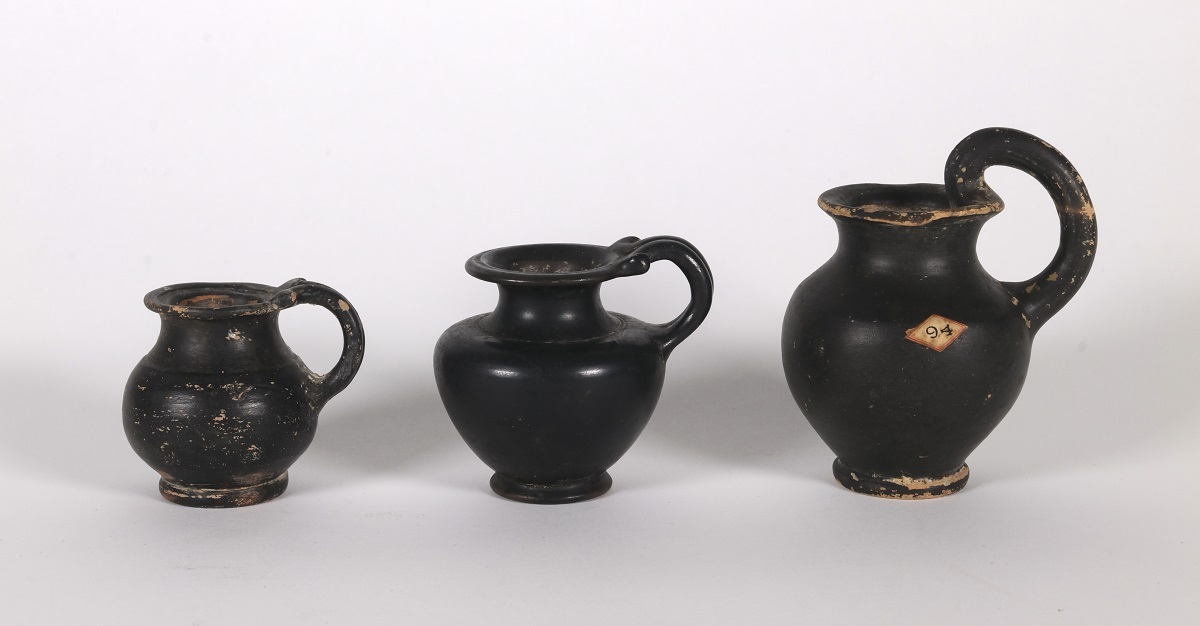The Museum's collection of antiquities (objects from the ancient Mediterranean) is a popular subject for academic research by students at the University of Canterbury.
Students have previously studied our Roman lamps and glass, gems and classical coins. Now our collection of Etruscan bucchero and black glaze ceramics is the subject of further investigation.
Etruscan bucchero is a type of ceramic tableware produced in central Italy between the seventh and fifth centuries BC. It is characterised by a dark grey or black clay that is burnished to create a highly polished surface that is thought, by some scholars, to imitate metal.

Examples in our collection include goblets, bowls, oinochoe (wine jugs) and kantharoi (wine cups). Some objects are plainly decorated with fluting or incision detailing while others are more elaborate, with embossed motifs like the panthers seen on C1969.6 (above).
Bucchero is sometimes confused with black glaze ware. Black glaze ware, as its name suggests, is buff clay ceramics, burnished and glazed in an iron-rich slip to create a black polished finish. Black glaze is typically classified as fine ware due to the thinness of the clay and has the more recognisable shapes associated with Greek ceramics.

How can we tell these beautiful ancient ceramics apart? A chip or a crack can reveal a multitude of sins. Often black glaze wares have been dip glazed and are easily identified by flipping them over and having a look at their feet, which will be unglazed and nude in colour.

Black glaze ware that has been completely covered in glaze relies on imperfections for identification to differentiate it from bucchero. Chips and glaze flaking around cracks will reveal the pale buff colour of the clay, where as a chip in bucchero will reveal a very dark core that is mostly indistinguishable from the surface of the item.





